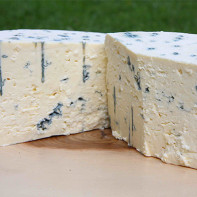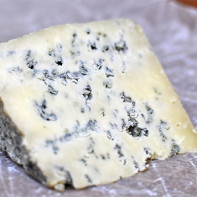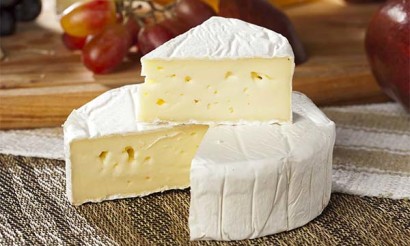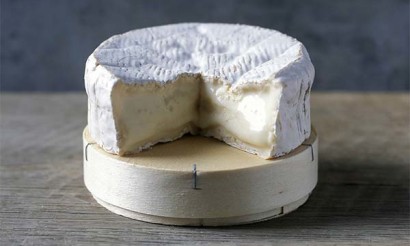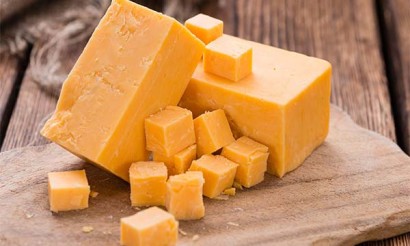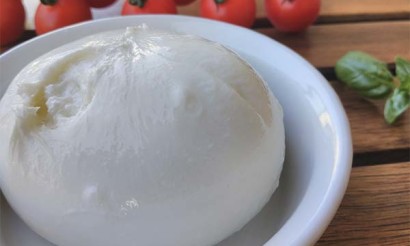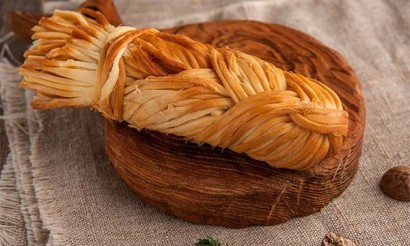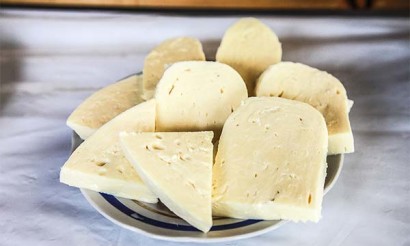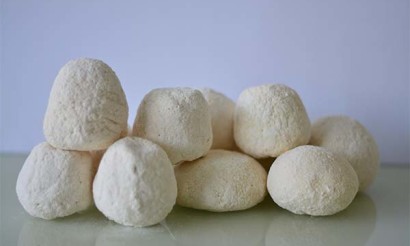Molded cheese: types, useful properties, how to eat properly
Mankind has been making such cheeses for over 4000 years. People have learned to manage the ripening process and are no longer afraid of mold that accompanies the product during its "maturation".
- How mold cheese is made
- Types of
- Calories
- What is mold cheese good for?
- For Women
- For Men
- Pregnancy
- Breastfeeding
- For kids
- For weight loss
- Useful properties of different kinds of mold cheese
- Roquefort
- Gorgonzola
- Dor Blue
- Stilton
- Molded Cheese in Medicine
- For Gastritis
- For Intestines
- Harm and Contraindications
- Can you be poisoned by mold cheese?
- How to choose and store mold cheese
- Can I freeze?
- How to know when mold cheese is bad
- How to make moldy cottage cheese
- How to eat mold cheese
- What to eat with?
- What wine goes with mold cheese?
- Can I Eat Every Day?
- What can be made with mold cheese: Recipes
- Meat salad with Dor Blue
- Camembert Grilled Cheese
- Interesting facts about cheese
How to make curd cheese
Moldy cheeses are made from cow (less often goat/heep) milk with the highest fat content. The final product is either hard or soft. It all depends on the technology by which it was prepared.
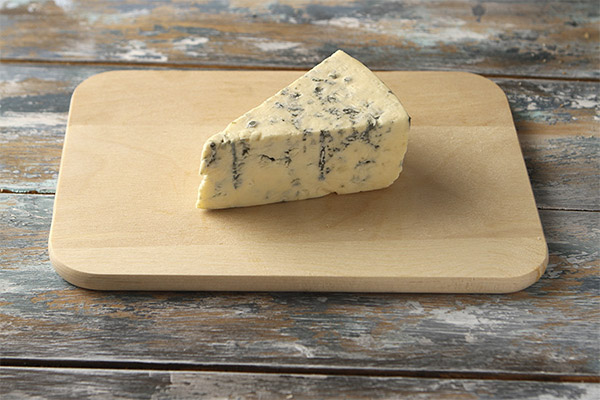
Types of
The main varieties of moldy cheeses and their cooking techniques are described below.
- With a white crust. The most famous representatives are called Brie and Camembert. The production process: milk is first fermented and salted, after which the resulting product is left to mature in cool, dark cellars. In rooms of such a plan, the walls are covered with the so-called "noble mold" (moldy fungi). Quality mature product of this variety is distinguished by the fact that its entire surface will be covered with mold.
- Blue mold. This noble cheese is remembered for the fact that on its slice is easy to see a large number of blue-green inclusions, as well as a peculiar veins. The most famous "blue" varieties are Roquefort and Blay de Cosses. In the preparation of milk first fermented, and then spread out in special molds to whey, and then salted. Next comes the process of introducing the strain of fungus: special long metal needles are stuck into the cheese. They are needed for faster spreading and growth of the mold. After all this, the cheese is transferred to a room that is well ventilated. There it will mature for a long time.
- With washed crust (savory). When these cheeses are not ripe, they are washed with brine. This is done to prevent the formation of ordinary mold. After this product is treated with fungal cultures. They can give the crust such shades as red, orange, burgundy or yellow. The color of the crust will further define the variety.
Caloric value
The fat content of the milk from which mold cheese is made will determine its caloric value.
Per 100 g of the product:
- Blue mold cheese - 362.6
- Dor Blue - 354
- Roquefort - 335
- Bavaria bleu - 450
- White mold cheese - 290
- Guermelin - 204
- Cheese with mold - 354
Individual types of mold cheese made to their own recipes will have different calories and ratios of fat, protein and carbohydrates.
How mold cheese is good for you
Moldy cheese may at first glance seem like a very strange delicacy. But it is a rich source of calcium. So what are the benefits of this cheese?
For Women
Representatives of the fair sex care about their appearance. It will be useful for all women to know that cheese with mold helps to fight cellulite. But in addition to this, such a product will prevent even the very process of fat accumulation.
For men
Men are often prone to heart and vascular disease. Many studies have confirmed that the regular use of moldy cheese in moderation will help prevent the appearance of cardiovascular pathologies. The composition of cheese contributes to the fact that the blood cholesterol level is normalized. This prevents the appearance of inflammation in the blood vessels.
When pregnant
Women who are carrying a child are familiar with such a condition as toxicosis. Many doctors recommend eating cheese with mold. It can help with the anemia that often occurs during this period.
It has already been said that any kind of moldy cheese is rich in calcium. For the formation of the skeleton baby needs exactly this useful element. Also, cheese is abundant in vitamins A and D, which prevent the development of various defects in the fetus, particularly rickets.
There is tocopherol in mold cheese. It will help support a pregnant mother and prevent possible miscarriage. The natural catalyst L-tryptophan is found in many foods, including moldy cheese. It promotes a good mood and prevents a state of depression, which can have a detrimental effect on the baby.
During pregnancy, this delicacy can be consumed in very small quantities only after consulting your doctor.
During breastfeeding
During breastfeeding, the mother should carefully monitor her diet. Many products can cause allergic reactions in your baby, and mold cheese is one of them. It is better to refrain from eating it in the first five to six months of breastfeeding, and after that gradually include it in your menu. If after eating this delicacy your baby showed signs of an allergic reaction, it is worth to give up the product until the end of the lactation period. Quality cheese will saturate the baby's body with calcium and vitamins, which will help ensure its healthy growth and development.
For kids
Cheese with mold is rich in calcium, magnesium and useful vitamins. Children can be given such a product not earlier than 5-6 years. It is also worth limiting the use of this product to children with a weak gastrointestinal tract or with a tendency to allergies. However, in the absence of contraindications, a child can be treated to this delicacy. It will help strengthen his bones and joints.
When losing weight.
Can I eat mold cheese while losing weight? Is it useful? Many figure-conscious people limit the consumption of such a dessert during weight loss, considering that it is too caloric. In addition, it does not belong to vegetarian cuisine, contains a lot of fat, is not the basis for mono-diet and in general is often found in the lists of banned products for weight loss. But are these fears justified? Let's look into it.

- Cheese with mold when losing weight is possible. Most people are afraid to overdo it with calories, but a person is unlikely to eat more than a couple of slices of 15-25 grams. Accordingly, and the calories will not be so much.
- The second point is the high fat content. However, if you look into the matter, it immediately becomes clear that there are a huge number of varieties. Among them, you can choose the most fat-free and low-calorie.
- Yes, mold cheese can not be the basis of a mono-diet. But this is only because it does not have enough useful properties to ensure the normal functioning of the body. It can only support health and diversify the diet.
General useful properties of moldy dessert when losing weight: it saturates the body with protein and calcium, normalizes digestion, keeps you awake, prevents eye diseases, improves vision, normalizes sleep and blood circulation, stimulates cell respiration.
To summarize, we can conclude that regular consumption of cheese during weight loss - a measure simply necessary. This product provides a complex effect on the body, not preventing weight loss, but only contributing to this process.
Useful properties of different kinds of mold cheese
At first glance, it may seem that all mold cheese is equally useful. But this is not the case. The following will look at the health benefits of the main moldy cheese varieties separately.
Roquefort
One of the most famous varieties of blue cheese is rightly considered Roquefort. It is characterized by blue-green streaks on the cut and a pleasant pungent smell.
Roquefort has anti-inflammatory properties. They are enhanced in an acidic environment. Such is the skin or the mucous membrane of the stomach. These same properties have elevated Roquefort in the list of therapeutic products for arthritis and gout.
It has long been known that the protein that Roquefort is so rich in boosts the metabolism. In addition, it satiates the body quickly. Because of this, one eats less, hence, this cheese is useful for weight loss.
Roquefort (along with some other varieties of blue cheese) prevents rapid aging. In addition, due to the characteristics of the composition of such a product prevents the appearance of fat deposits under the skin (cellulite). In addition to the benefits Roquefort has for the human body in general, it also has a great taste. The milk for it is taken only from a special breed of sheep, and it only matures in certain caves. Although modern technology makes it possible to make blue moldy cheese year-round, the tastiest one is available from April to October.
Gorgonzola
When scientists studied the Gorgonzola cheese variety, they found that it has an antithrombotic effect. This is due to its composition, which includes special peptides that improve the gastrointestinal tract and blood vessels.
Especially useful will be this type of cheese for athletes. Gorgonzola has a large number of proteins which are easily assimilated by the body. They appear as a result of the breakdown of milk proteins.
Many blue cheeses are aphrodisiacs and have antioxidant properties. Gorgonzola cheese is one of them. This kind of cheese is an excellent snack, because just a couple of slices will satiate the body and give energy for several hours of work due to the composition rich in fats and proteins.
Gorgonzola has an incredible taste because of its special rare type of mold. It also helps to strengthen the body's immune system.
Dor Blue
Special attention is paid to the mold, which is present on every piece of Dor Blue cheese. It has beneficial properties that strengthen and improve the body's immune system.
Dor Blue cheese contains many amino acids. They have a beneficial effect on the human nervous system. That is why many doctors recommend their patients to fight insomnia, irritability or depression by eating exactly moldy cheese of this variety.
The amino acids that are so abundant in Dor Blue strengthen the memory, improve brain function and increase the overall productivity of a person.
It is very beneficial to consume Dor Blue for people suffering from diseases such as:
- cancer;
- anemia;
- arthritis;
- arthritis;
- tuberculosis.
The product helps ease the course of postoperative rehabilitation.
In addition, Dor Blue mold cheese is practically lactose-free. This means that people with an intolerance to this substance can safely eat it.
Stilton
Stilton mold cheese contains an amino acid. It helps improve the body's defenses by strengthening the human immune system. Choline in the composition is useful in that it helps normalize blood cholesterol levels, and iron, which is abundant in Stilton, stimulates hematopoiesis and improves overall blood composition.
Do not be afraid of the sulfur in the composition of mold cheese. It helps to normalize the metabolic process in the body.
People who have problems with bones or joints, Stilton will be very useful, because it combines calcium and phosphorus. Their combined action helps the body to regenerate bones faster, strengthen hair, nails and teeth. In addition, Stilton prevents tissue dehydration due to the sodium in its composition. And magnesium and potassium support normal cardiovascular function.
Mold cheese in medicine
Many people mistakenly believe that mold cheese of whatever variety is a gourmet delicacy, but no more. However, they are wrong. Certain varieties of moldy cheeses play a major role in medicine, such as in the treatment of diseases.
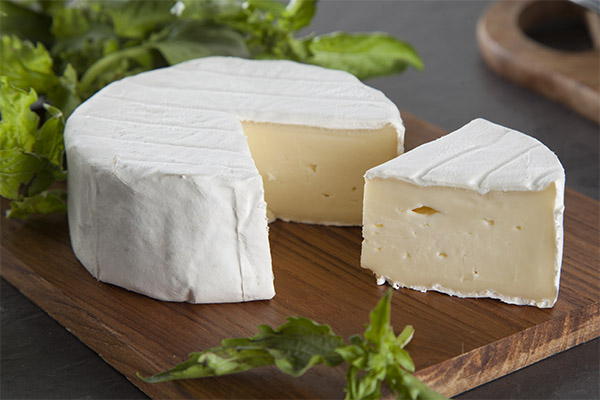
For gastritis.
People suffering from gastritis can eat cheese. If we talk specifically about the delicate varieties, then from them it is allowed to eat only blue cheeses with mold (such include Dor Blue, Dana Blue, etc.). Before you eat a full portion, it is better to try to consume only 7-10 grams of the product and see how your body reacts. If all is well, then you can include the product in your diet.
There is information that fungi of the penicillin genus help to fight the bacteria that are the causative agents of gastritis. However, there is still a lot of research and discussion on this subject. The final decision, whether to eat cheese with gastritis or not, should be taken only after consulting with a specialist familiar with the problem.
As for the portion size, in such a disease as gastritis, you should not consume more than 50 grams of the product per week. Reducing portions will not affect the body, but an excess can negatively affect the course of the disease. The bottom line is this - mold cheese with gastritis is not forbidden to eat, but it is better to insure and discuss it with your doctor, as well as to comply with the weekly norm and not to exceed it.
For the gut
If we talk about the effect of molded cheeses on the intestines, there are pros and cons.
Thanks to penicillin, such delicacies have anti-inflammatory properties. If they get into an acidic environment, they also increase. This is, for example, what happens when bacteria enters the gastrointestinal tract. In addition, cheeses with mold normalizes digestion, and the mold itself helps the absorption of useful substances.
One of the most important properties that have moldy cheeses - they stop the processes of putrefaction and fermentation, which can entail intoxication of the body. They create favorable conditions for the development of "good" bacteria that have a healing effect on the body, thus preventing bloating and abnormal intestinal function.
But moldy cheeses are not a cure-all. Excessive consumption (more than 50 g of cheese per day) can disrupt intestinal microflora, as well as cause dysbacteriosis.
In the presence of chronic diseases of the gastrointestinal tract there is a risk of exacerbation.
It is important to make sure that there is no allergic reaction to penicillin. Individual intolerance can cause an allergy to cheese with mold. Sometimes this has fatal consequences.
Harms and contraindications
Undoubtedly, mold cheese is a delicacy quite peculiar. In addition to the taste "to the liking", it has a list of contraindications and harmful properties.
Is it possible to be poisoned by mold cheese
Although there is more and more talk about the benefits of cheeses with mold, it is worth remembering that they do not go through the process of pasteurization. This means that the living microorganisms in them do not die, therefore, can be detrimental to health.
Cheese itself is rarely the cause of intoxication. More often intoxication is caused by a violation of production technology. Pathogenic bacteria can enter the product at any stage of production if sanitary rules are violated. No buyer is immune from this, since he sees only the final product and can not observe the conditions of its production. Possible complications:
- Salmonellosis (signs of poisoning can appear in as little as six hours).
- Coli infection (dangerous because it does not show the signs of food poisoning).
- Listeriosis (complications - meningitis, infectious-toxic shock. Particularly dangerous for pregnant women).
- Brucellosis (transmitted from an animal sick with the corresponding infection in case of insufficient heat treatment of milk).
To protect yourself and your loved ones from this, you should buy products from large well-known companies or trusted suppliers. You should also check the expiration date of mold cheese. It's pretty simple. If you press on a piece of expired delicacy, liquid will come out of it. In a similar experiment with a quality product, this will not happen.
How to choose and store mold cheese
Homeland of mold cheese is France. In our regions, the culture of eating such an undoubtedly exquisite delicacy is still very young and is just forming. If in France you can buy a special place to store such a product, then to us such devices, as we know, have not yet reached. To enjoy the taste of mold cheese and to appreciate it, it is necessary to seriously approach the process of selection and storage of the product.
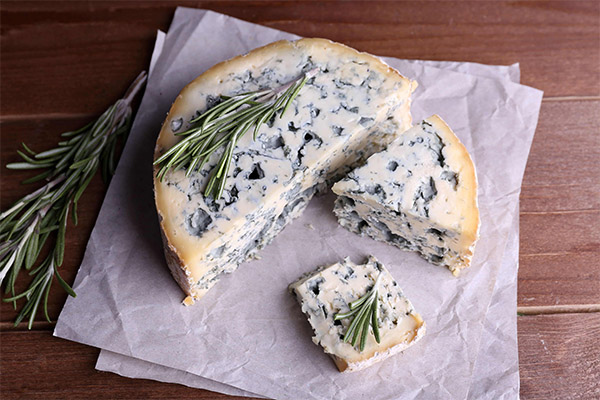
The first thing to do is to read the composition. High quality noble mold cheese is distinguished by the fact that its composition will not contain anything but milk, fungus, salt and enzymes. Think about buying the product, if you find in its composition some additional ingredients.
To get to know the flavors of moldy cheeses on your own, you should start with the most neutral ones. These can be blue cheeses or Brie. You should start gradually, eating in small portions. Chances are that if you start with Camembert you won't want to try it again.
Can I Freeze?
As for storing moldy cheeses, you can not freeze them, therefore, the freezer is not suitable. You need to store the product in the packaging in which it was sold. You should not use polyethylene to preserve the delicacy.
The best option would be to buy a small portion of cheese with mold and eat it at once, so you do not have to store it. Because of the presence of live microorganisms in the product, it can expire much faster if not stored properly.
How to know if mold cheese has gone bad
To buy a quality product, you need to check its expiration date. Manufacturers are not always conscientious about the shelf life, so to check the veracity of the label, press on the cheese and check if the liquid has leaked out. If it has, the product is spoiled.
After making sure that the moldy cheese is suitable for consumption, you should assess its appearance and consistency. If it is any kind of blue cheese, their characteristic veins, through which the mold was introduced, should be neat and discreet. The cheese itself should be soft, well-shaped, loose. If it crumbles in the hands, it indicates that it is spoiled.
If you have to choose white mold cheese, you should pay special attention to its smell. Because of the penicillin in its composition, it will smell like it smells in hospitals. It's hard to imagine if you've never eaten such cheese, but once you've tasted it, you'll know what it's about. Spoiled cheese will have an unpleasant smell.
How to make homemade cheese with mold
One of the most famous noble cheeses is considered to be the variety Roquefort. To enjoy its taste, it is not necessary to look for it in stores. Such a delicacy can be prepared at home. To make it, you will need the following ingredients:
- 8 liters of cow's milk;
- 0.25 teaspoon of mesophilic starter;
- 1/15 tsp. moldy fungus of the penicillin genus;
- 0.25 tsp. calcium chloride;
- 0.25 tsp. rennet;
- 2 tsp. salt.
Cooking Technology:
- In the milk, heated to 35 ° C, introduce mesophilic starter. Leave it for 5-7 minutes. After this time it is necessary to add the mould. Mix and leave the mixture covered for 35 minutes.
- Dilute calcium chloride in 30 ml of water.
- Dilute rennet in the same volume of water.
- After the time indicated in the first point, mix all the ingredients and leave for an hour and a half under a lid.
- After this time, the mass should turn into a clump of thick consistency. Cut it into pieces with a knife and leave it for 7-10 minutes. During this time the whey should separate from it.
- Prepare a colander, put gauze on the bottom. After 10 minutes drain the clot. Leave it for another 12-15 minutes, so all the whey drains, leaving only a solid mass.
- Wrap the remaining product in gauze and hang it over a bowl for 35 minutes.
- After this, put the resulting cheese under a four-kilogram press. In this state, it should lie for at least 12 hours.
- At the end of this time, add salt to the cheese and cut it into small pieces.
- The resulting mass compacted in a cheese mold.
- During the first 24 hours, turn the mold at least 5 times. The next day twice will be enough. On the third day, take the product out of the mold and place it in a ventilated place to dry out.
- When the cheese is dry, make punctures in it. They are often made with a knitting needle, but any sharp oblong object with a small diameter will do. The punctures are made for free growth of mold.
- When everything is done, place the cheese in a container with a lid and put it in a cold room for 30 days. The temperature should not be higher than 10 ° C.
- During the first 7 days, turn the product every day. After that it will be enough to turn it once every two days.
After the specified time, the resulting cheese with mold can be taken out and taste. It would be better if first you get acquainted with the taste of this type of cheese, buying a small piece in the store. Then it will be easier to navigate how close to the original the product made by your hands turned out.
The Proper Way to Eat Molded Cheese
It would seem that what could be easier than eating dessert? This is really no big deal, but with such a delicacy as mold cheese, the situation is different. To fully enjoy the taste and appreciate it, it is necessary to eat such a dessert properly.
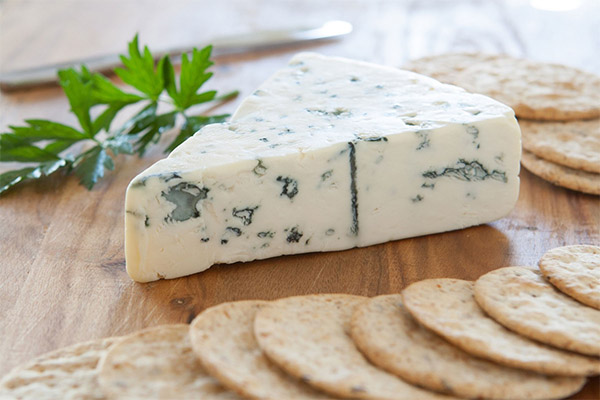
The first thing to remember is that you should not rush to the most exquisite varieties. As mentioned above, you should start with light blue varieties or Brie. Once you get used to them, you can try more noble moldy cheeses. Let's go over the basic rules for eating moldy cheeses properly.
What to eat with.
A well-aged dessert brie tastes great with fruit and sparkling wine. Camembert is commonly eaten with grapes, pears or rosé wine.
It is extremely important to warm the cheese to room temperature before serving. It is not necessary to resort to the help of the microwave oven. It is enough to simply put the covered delicacy in a warm room beforehand.
What wine goes with mold cheese
More often than not, mold cheese becomes a delicacy that is served with wine products. But not every wine combines with the taste of moldy cheese.
If we talk about soft varieties of cheese, characterized by the delicacy of taste, it is better not to use them in conjunction with sweet fortified wines, which are a little spicy. Replace them with sour varieties that have a rich citrus bouquet.
White wine or red? A better choice would be a white wine, but as you know, there is no match for taste and color, so it is worth experimenting with a red wine, too. In this case, it is better to take a young wine and an equally young white moldy cheese.
Sparkling wine goes best with Brie, as mentioned earlier. You can also try such a drink with a type of moldy cheese Roquefort or Camembert.
Can I Eat It Every Day?
Many gourmets are interested in the question, how often you can consume mold cheese and in what quantity? When it comes to a single meal once every few months, you don't have to worry. But if the delicacy is to your liking and you can buy it every day? Does such a dietary regimen affect the body? After all, mold cheese contains live microorganisms. Let's find out.
The first thing to know is that if you consume a small amount of mold cheese, the small doses of antibiotic contained in it will be safe for the body. Most likely, they will not affect it at all. But with daily consumption of moldy cheese, things are different. Antibiotics will be detrimental to the composition of the intestinal microflora. If a person has previously had a gastrointestinal infection or antibiotic therapy, their effect can severely damage the health.
Among other things, a fairly strong allergen is fungi contained in absolutely all moldy cheeses. If a single exposure to an irritant a person may not notice, then the cumulative effect is likely to cause hives and various types of rashes.
Careful attention should also be paid to the composition of cheeses with mold. They remain a high-calorie product with a high percentage of fat. This means that their excessive consumption leads to unwanted weight gain as quickly as consumption of similar quality bakery products.
Based on general recommendations of nutritionists, we can conclude that the optimal amount of mold cheese, which can consume an adult healthy person - no more than 50 grams of product. It is better to combine it with wine products and vegetables / fruits.
People who are prone to allergies, should think carefully before introducing such a delicacy in your diet.
What you can make with mold cheese: recipes
Moldy cheese is not only a delicious delicacy that will perfectly complement wine, but also an ingredient in many dishes. Here are some recipes using this delicacy.
Meat Salad with Dor Blue
Ingredients:
- meat (chicken\indeika) fillet or breast - 160 g;
- moldy cheese (Dor Blue type) - 170 g;
- sultanas - 85 g;
- mayonnaise - to taste;
- Cabbage leaves (Peking) - 230 g;
- grapes - 30 gr.
Cooking technology:
- Boil the meat (optional). Then wait until it cools to cut it into medium sized cubes.
- Pre-rinse under running water the leaves of the Beijing cabbage. When they are dry, you need to cut them.
- Cut the moldy Dor Blue cheese into large cubes (2x2).
- Cut the grapes in half.
- Mix all ingredients in a bowl. Dress the salad with mayonnaise to taste.
Fried Camembert cheese
Ingredients:
- Camembert - 5 heads;
- Garlic - 3-4 cloves;
- parsley - 55 gr;
- tomato - 3 pieces;
- olive oil - 55 ml;
- salt - to taste;
- ground pepper;
- half a lemon.
Cooking technology:
- Stew in oil with lemon juice pre-cut heads of garlic and vegetables. It is not necessary to bring the ingredients to the consistency when they are "overcooked". You need to find the golden mean. You can be guided by the appearance of the tomatoes. They should be a little blurry, but retain their shape and fresh appearance. On a high heat, three minutes of frying is usually enough.
- Preheat the grill pan. After frying the previous ingredients, place the cheese on the heated surface. Roast until the heads are ready to melt, but do not overdo it. It is important to remove the cheese from the pan in time (before the heads begin to melt).
- Transfer Camembert to a plate and sprinkle the mixture from step 1 on top.
That's all - roasted Camembert is ready! This dish is usually served hot. Eat it before it cools.
Interesting facts about cheese
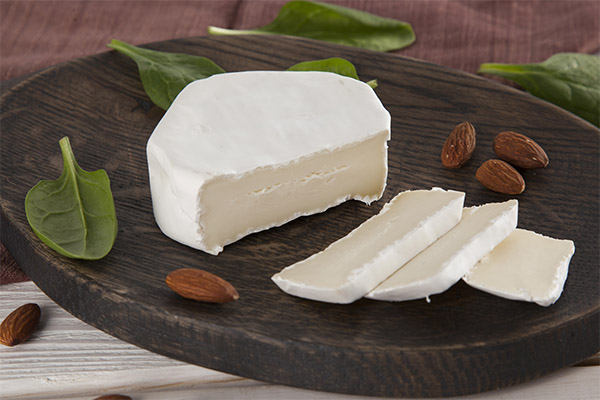
- Probiotics are found in all kinds of mold cheeses, but Stilton has especially many of them. They are useful in that they create a hostile environment for the life and reproduction of harmful bacteria, thereby protecting the body of the person who ate such a product.
- Molded cheeses prevent abdominal pain and fight the symptoms of irritable bowel. This was proven by scientists who published their report in 2005 in an English-language scientific journal.
- In 2011, moldy cheeses were proven to have a positive effect on the human immune system. The beneficial bacteria they contained helped strengthen the immune system. The strongest effect is noticeable after vaccination, when the body is weakened by the flu virus or cholera.
- It is known that the place where moldy cheeses first appeared is France. Well, the locals have the lowest rate of heart and vascular disease. Scientists argue that this is due to the long-standing culture of consumption of moldy cheeses. If we have such a snack - an exotic delicacy, in France, it's quite a familiar dessert.
- Moldy cheeses are allergy triggers, but they themselves are struggling with it. If a person is not allergic to dessert, then the symptoms of an allergic reaction to another irritant will help cope with mold cheese of any kind. This is due to the lactobacilli contained in them.
- Osteoporosis can prevent exactly cheese with mold, because it has a high percentage of such an element as calcium. However, people with a natural or acquired intolerance to lactose or penicillin should avoid eating cheeses with mold. They are a natural habitat for the penicillin fungus. In moderate amounts it is safe for a healthy person, but for those with such diseases even a small portion is dangerous.
- Those who have to "work their heads off" should definitely get to know the taste of moldy cheeses. Scientists have proven that the beneficial bacteria they contain help to improve and strengthen the memory.
- Cheeses based on goat's milk are ideal because they are low in calories and have enough B vitamins. They, in turn, stimulate digestion and help to reduce fat deposits (cellulite).
- People who regularly exceed the daily quota (50 g) of mold cheese can suffer from hyperactivity, insomnia, problems with attention and concentration, excessive emotionality and impressionability.
- Due to the useful substances that react chemically with enzymes, moldy cheeses help to cope with stress and give a boost of energy.
- Mold cheese is considered one of the most perishable products. The shelf life is low due to the presence of live microorganisms and mold. Therefore, it is better to buy a portion of the delicacy for one time, so you do not have to store it.
«Important: All information on this site is provided for informational purposes only purposes. Before applying any recommendations, please consult with a specialized health care professional before using any of the recommendations. Neither the editors nor the authors shall be liable for any possible harm caused by materials."


